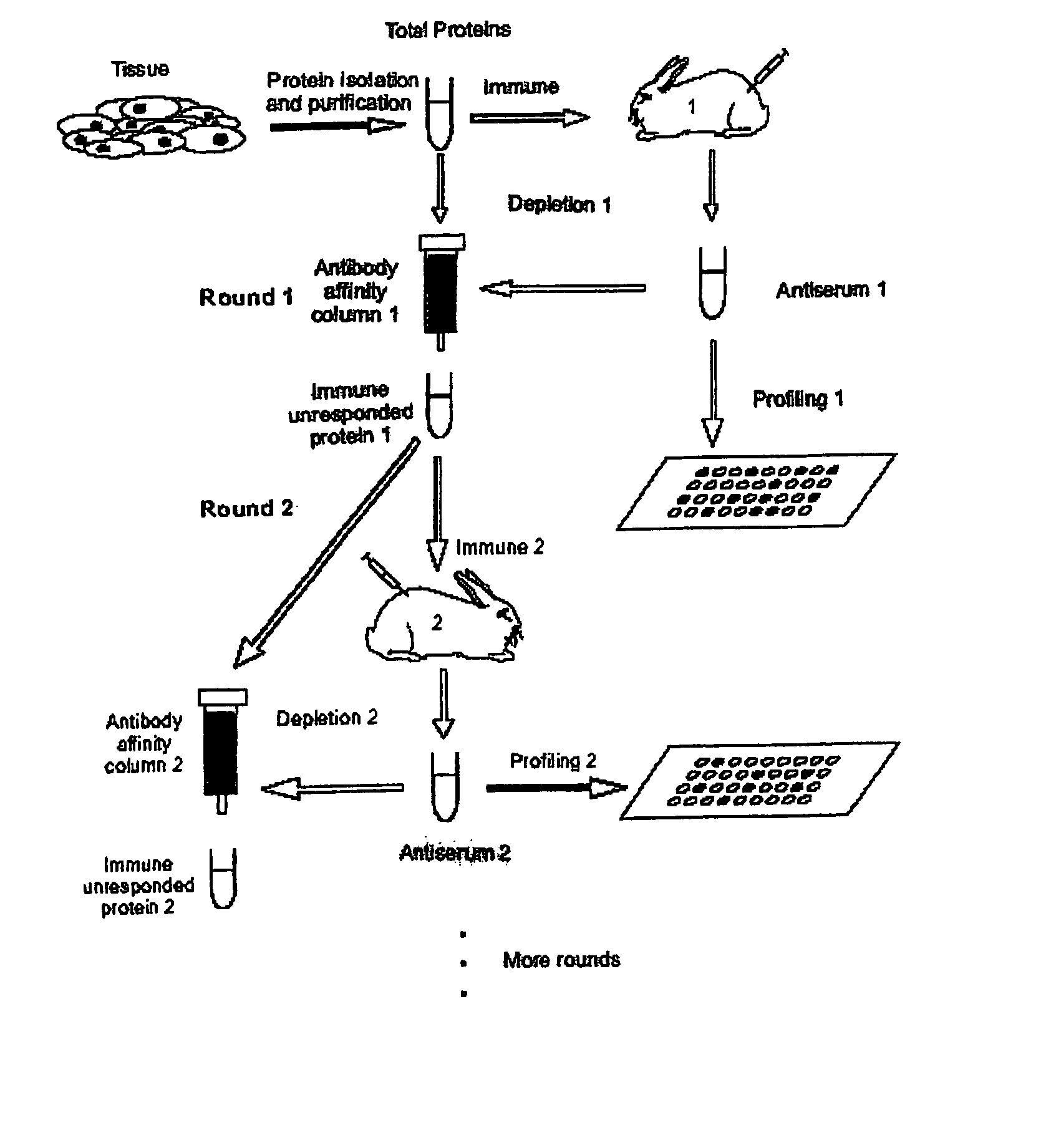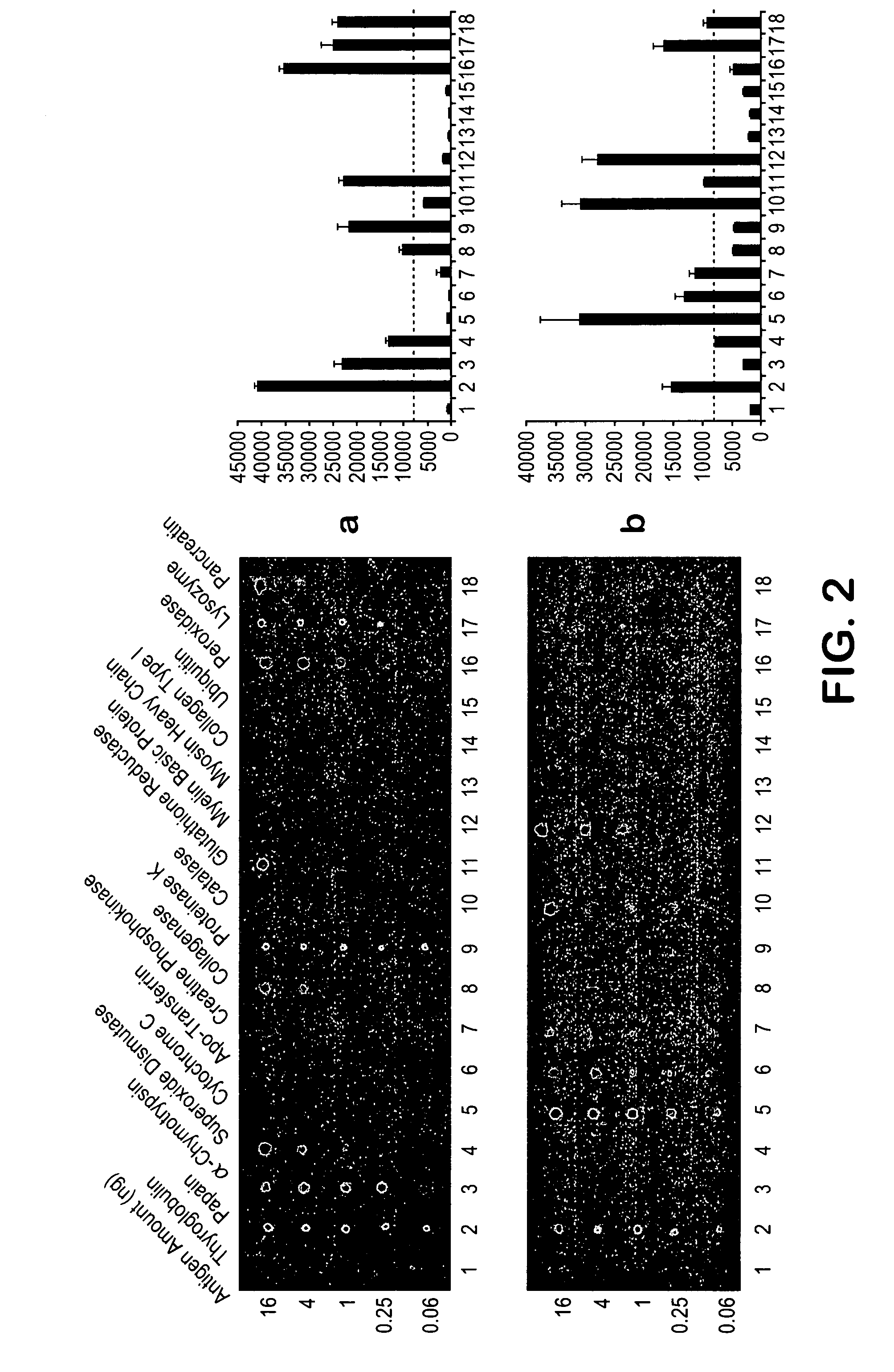Method for proteomic analysis utilizing immune recognition and cumulative subtraction
a proteomic analysis and immune recognition technology, applied in the field of proteomics, can solve the problem of identifying the composition of any given proteome alone, and achieve the effect of simple and noninvasive collection
- Summary
- Abstract
- Description
- Claims
- Application Information
AI Technical Summary
Benefits of technology
Problems solved by technology
Method used
Image
Examples
Embodiment Construction
[0023] A method of identifying proteins in a proteome comprises the steps of: (a) immunizing a host organism with a sample containing an initial mixture of proteins from a tissue or fluid to be evaluated to elicit an antibody response to one or more proteins in the initial mixture; (b) obtaining an antiserum from the host organism after immunization; (c) contacting the antiserum with an array of known proteins to form one or more antibody-protein conjugates, thereby identifying the one or more proteins in the initial mixture that elicited an antibody response in the host organism; (d) optionally removing the proteins that have elicited antibodies in step (a) from the initial mixture to form a mixture of non-responding proteins; and (e) optionally repeating the previous steps (a) through (d) one or more times, each repetition utilizing the mixture of non-responding proteins from the immediate prior repetition in place of the initial mixture of proteins to identify one or more additio...
PUM
| Property | Measurement | Unit |
|---|---|---|
| pH | aaaaa | aaaaa |
| pH | aaaaa | aaaaa |
| voltage | aaaaa | aaaaa |
Abstract
Description
Claims
Application Information
 Login to View More
Login to View More - R&D
- Intellectual Property
- Life Sciences
- Materials
- Tech Scout
- Unparalleled Data Quality
- Higher Quality Content
- 60% Fewer Hallucinations
Browse by: Latest US Patents, China's latest patents, Technical Efficacy Thesaurus, Application Domain, Technology Topic, Popular Technical Reports.
© 2025 PatSnap. All rights reserved.Legal|Privacy policy|Modern Slavery Act Transparency Statement|Sitemap|About US| Contact US: help@patsnap.com



